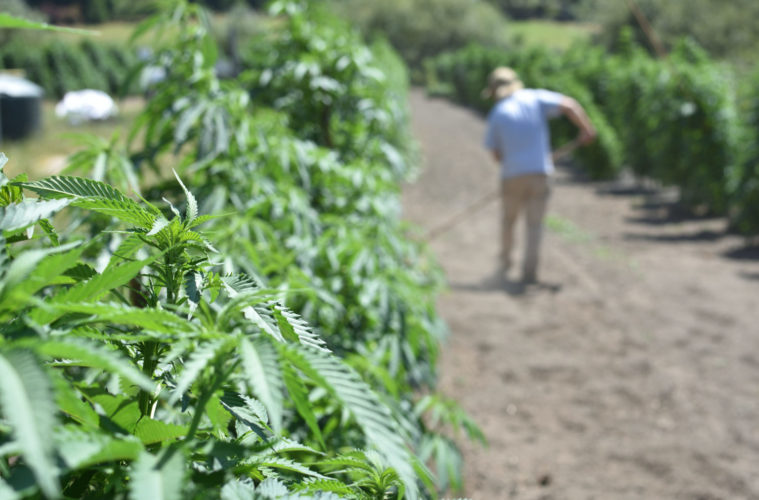Dry farming cannabis shows new levels of symbiosis with the ecosystem and great sun-grown pot.
While dry farms are said to only make up a dozen cannabis cultivation operations in California, the resulting cannabis is must-smoke-pot for anyone looking to try flavor-loaded nugs grown with a different kind of bio-responsibly in a water-heavy industry.
To get the full tale on dry farming, we headed north to the Redwoods of Humboldt County. There, Chrystal Ortiz, the founder of one of the Emerald Triangle’s newest dispensaries, and her husband Noah are at the cutting edge of growing awesome weed with only the water cycle to provide the plants’ hydration.
The first stop was the new shop, Herb and Market Humboldt. Chrystal greeted us and immediately took us inside to check out the local flower wares displayed by region. As the conversation quickly turned to dry farming, she grabbed some Sunboldt that had been produced using the practice
As I spun the lid off the jar of Loopy Fruit and opened the wax paper, an immediate sweet floral bouquet filled the air. The Blackberry Kush x William’s Wonder cross was quality for sure. But most importantly, that quality had held up through most of the year as we’re only a month removed from this season’s harvest kicking off. The dry-farmed pot had now checked a couple of major boxes for us. But how was it grown?
While dry farming is gaining more notoriety in the wine and produce sectors, outdoor cannabis cultivation is still very water-intensive. It’s almost hard to picture, but once you get out into the field and see the process, it all makes a lot more sense.
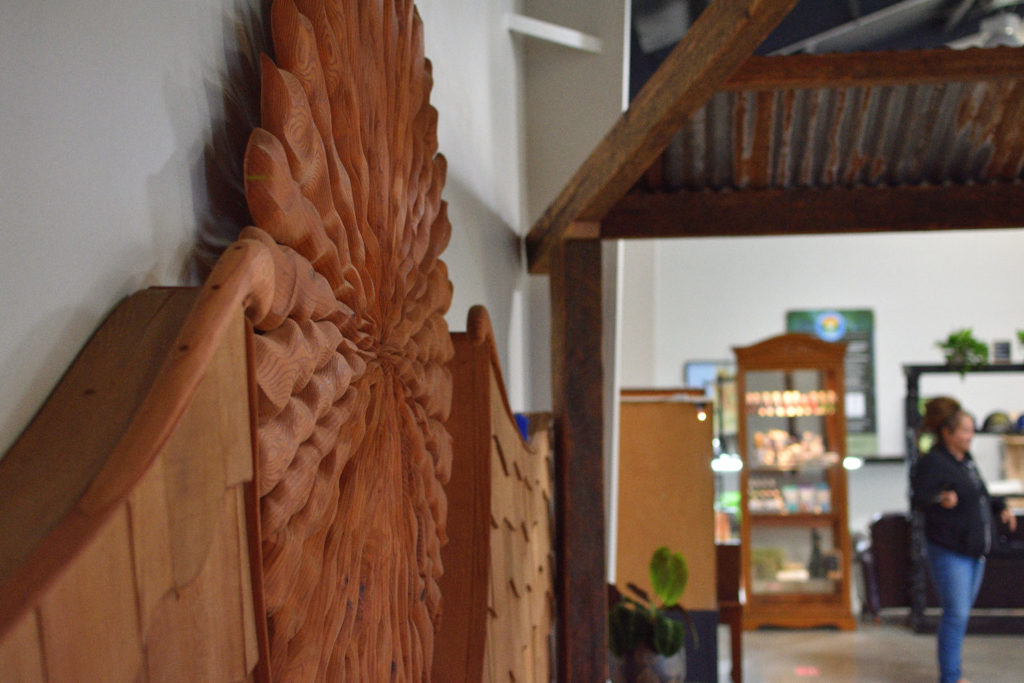
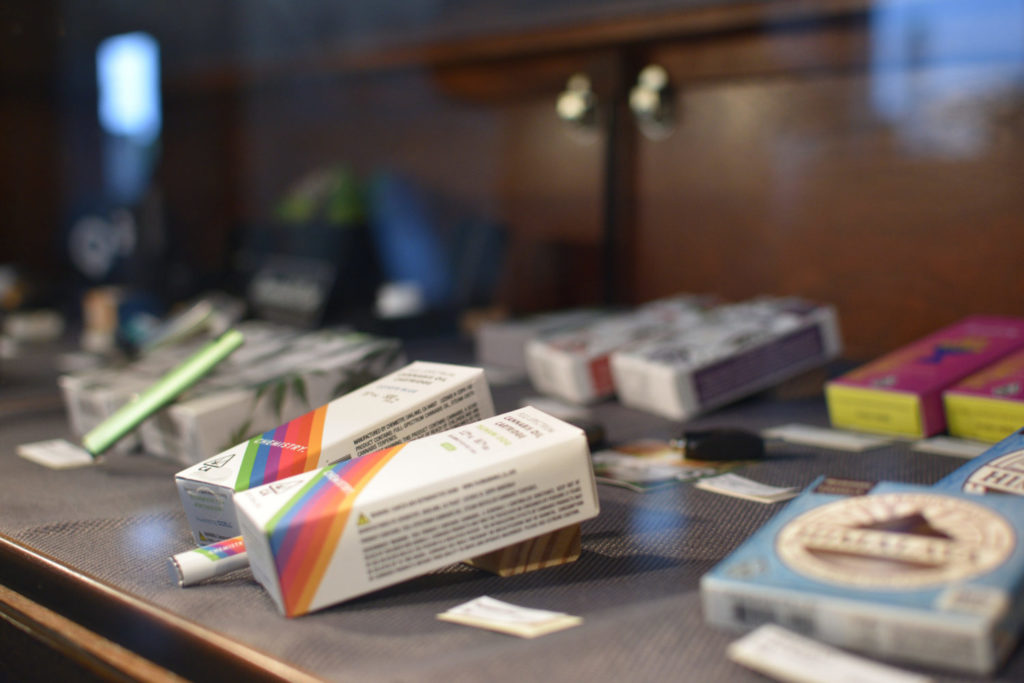
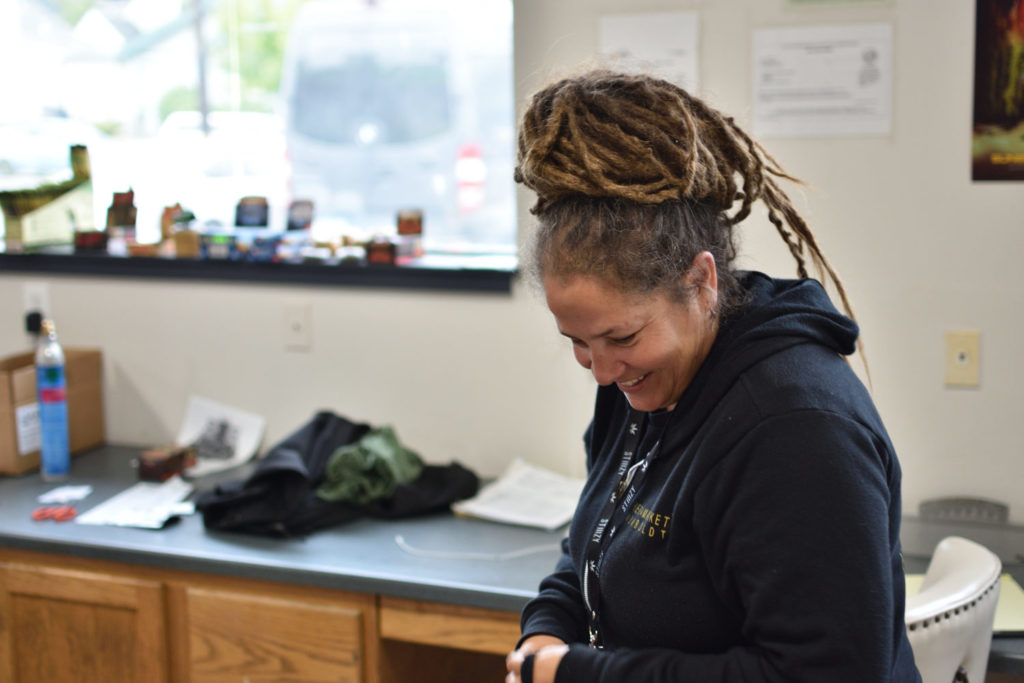
As we entered High Water Farm, Noah greeted us as he awaited a shipment of one of the various things it takes to grow good pot at scale. The dirt was still pretty packed under our feet at that point since it’s where the cars come in. One of the first things you notice as you hit the farm is the gentle breeze that rolls through the valley. But as soon as you step foot in the field, the breeze takes a backseat to a new revelation: how soft the soil is.
Noah compared it to beach sand. The comparison felt very appropriate as I sunk in a little bit step by step. “There is not a rock as deep as you can dig,” Chrystal said as she walked barefoot in the dirt, “You just dig with your hand and plant a ganja plant, come back in six months, and it’s ready.”
The ultra-fine soil they’ve built up over the last few years is a major contributor when you won’t be directly feeding the plants as part of the watering schedule. A cover crop helps revitalize the field in the offseason when it’s tilled back into the soil for the plants to eat in the summer.
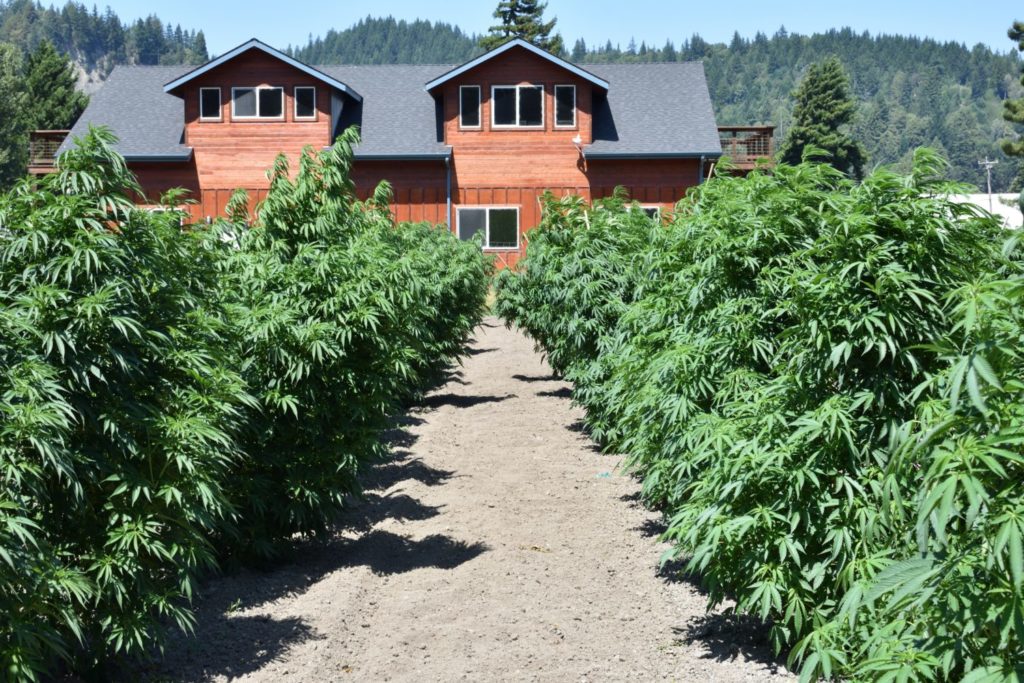
“As the soil heats up from the sun, the evaporation pushes the gas through the cannabis roots,” Chrystal said as Noah took a knee to point out how deep into the 10 foot wide aisles the roots stretched out.
“It’s not sucking the water, it’s not tapped in,” Noah said.
“Everyone thinks it’s some taproot going deep down. It’s not,” Chrystal added.
“Instead, it’s these micro-feeder roots that are absorbing the water vapor at this last little stage. That’s why it’s so important to get it to be like beach sand. If it was thick, hard, and chunky it wouldn’t work,” Noah said.
I asked if that meant they were out there constantly tilling laps.
“Yeah, basically,” Chrystal replied with a laugh.
“Well once a week,” Noah said while noting in between the more extensive efforts on the soil they go between each plant with a hula hoe by hand. He said hula hoeing is kind of like watering in the sense that you’re killing the weeds that pop up that would be stealing water from the crop.
Noah said that while they don’t water, every now and then he’ll hit the plants with a foliar spray and they also use a plant-safe soap to clean up things like dirt and bugs that blow in with the breeze. “We do that often,” he said.
Dry farming in the part of Humboldt they grow in was also the traditional way of growing vegetables in addition to pot. At High Water Farm they grow various flowers and veggies alongside their weed. But Noah admits many of their neighbors have also gone the more conventional route when it comes to cultivation.
“It’s hard to say. Of course you probably get a more consistent revenue stream doing mixed light and getting a consistent harvest. Maybe there isn’t as big a push to break the harvest up, maybe it’s more profitable,” Noah said, “But [with dry farming] at the same time you look back, you’re reducing your imprint and you’re gaining in these other ways that can’t be measured monetarily. It feels good that that’s part of the harvest, or yield, as well.”
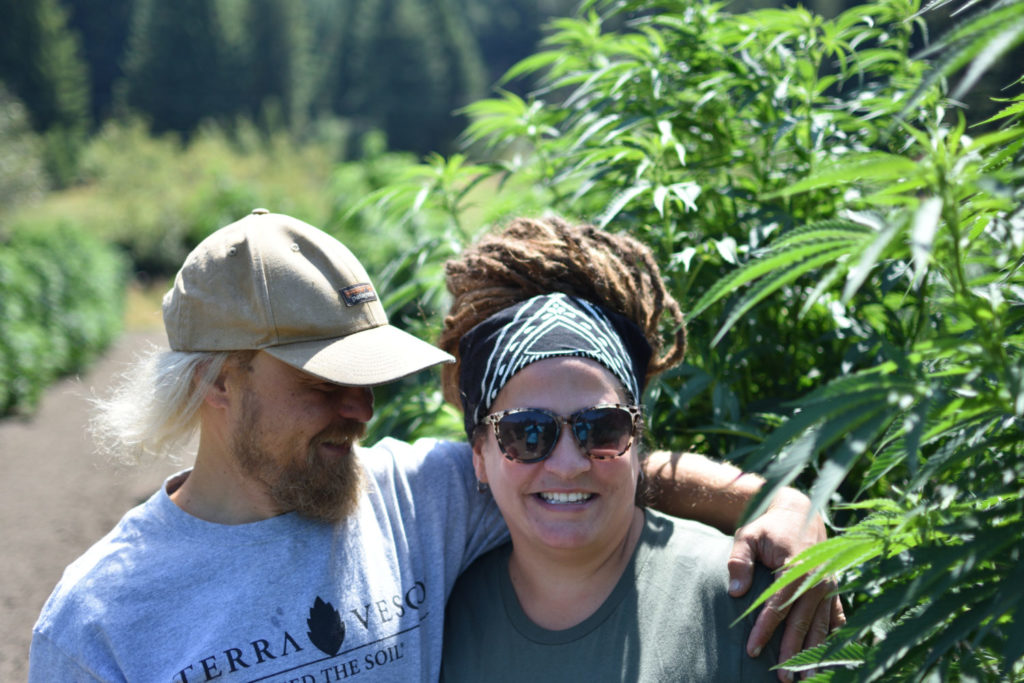
We asked the longtime growers what they felt like the biggest differences in the dry farm plants are compared to the ones they’ve worked on over the last two decades. Noah said just how hardy they are, and quipped about the perks of them feeding themselves on a perfect schedule.
“I will honestly tell you I don’t… I’m not the master of… I don’t know exactly every single week what every plant needs in flowering and all the way through and when to feed and when to not water,” he said. “And you know that’s just being for real. After years and years, it’s not an easy process. You have to listen to the plant, you have to really know the strains, all that stuff. And I’ll tell you what, it just takes a lot of the guesswork out of it when it’s doing it on its own. It does it better than I can. It really does. So we just see that and actually get comfortable in that and know it’s going to happen.
The biggest test of faith comes every summer when they transition the plants from the nursery where they get ready for the farm to the dirt. The first week after transplanting things look rough. They noted how hard it was to make the original jump to dry farming after so many years of success, but in the last few years, it’s all come together.
“They wilt, they get all crazy,” Chrystal said. Eventually, they start to get their color back and spring to life about a day later. “Then they’re off to the races after that.”
We asked if they thought anyone had ever been so traumatized during that vegetative process that they ran out to buy smart pots to put their plants in. “Oh one hundred percent,” Chrystal quickly retorted. “Everyone that’s ever done it. But I think there are only a dozen of us that really dry farm cannabis.”
“And have the faith and confidence to know what will happen when their plants come out of it, and not water it, or not try and feed it, or do everything you could with it,” Noah added.
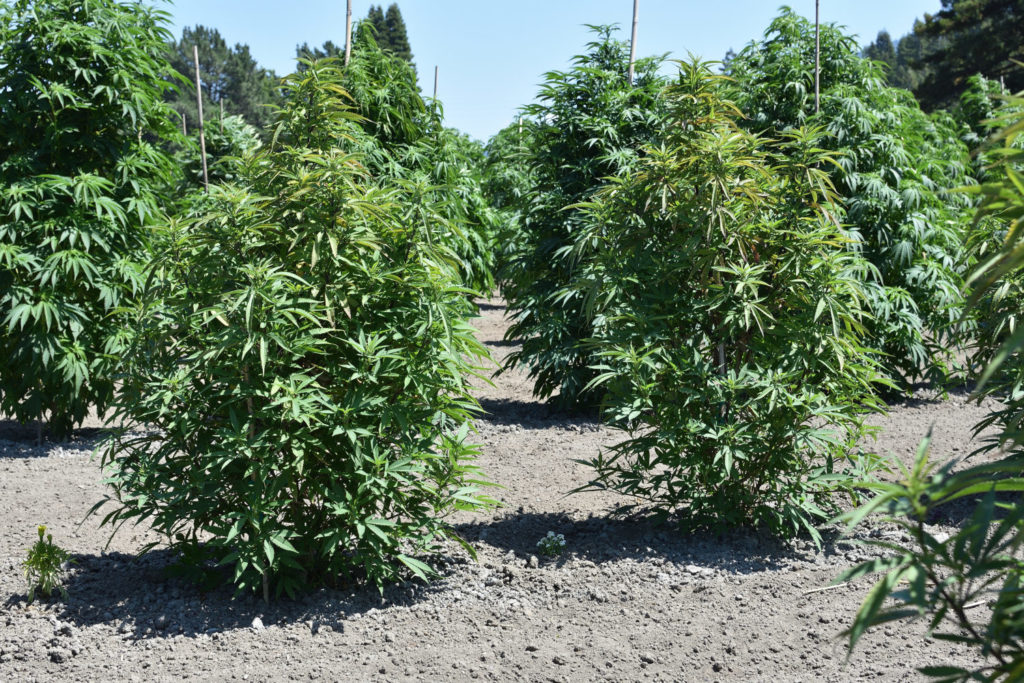
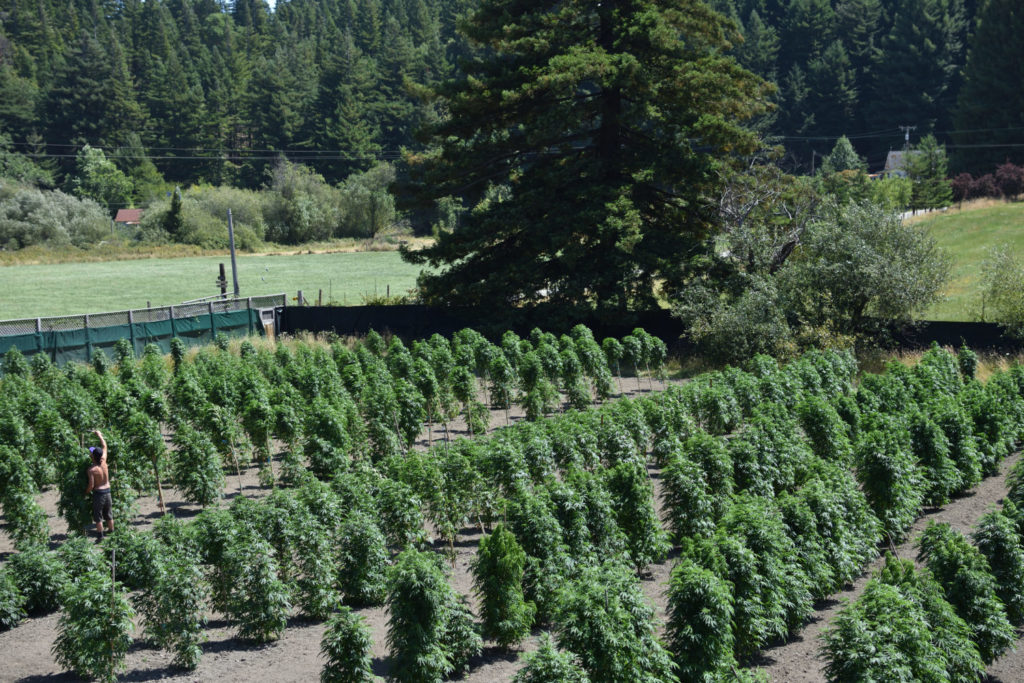
The former Humboldt Cup winners have quite the pedigree when it comes to selecting boutique genetics. The Summer of 2020 proved no different, including some inhouse pairings that sound like they’ll be absolute heat.
Included among them is The New paired with a Mandarin SFV Dawg. The cross was bred in-house. “So it’s basically Jesse from Bio Vortex crossed with The New,” Chrystal said. Both phenos used as ingredients came from a seed. Noah said he popped a few seeds of the recently launched The New, a Girl Scout Cookies x Larry OG collaboration from Sherbinskis and Humboldt Seed Organization, and started working with the nicest one.
The results sound like they will be wild come October.
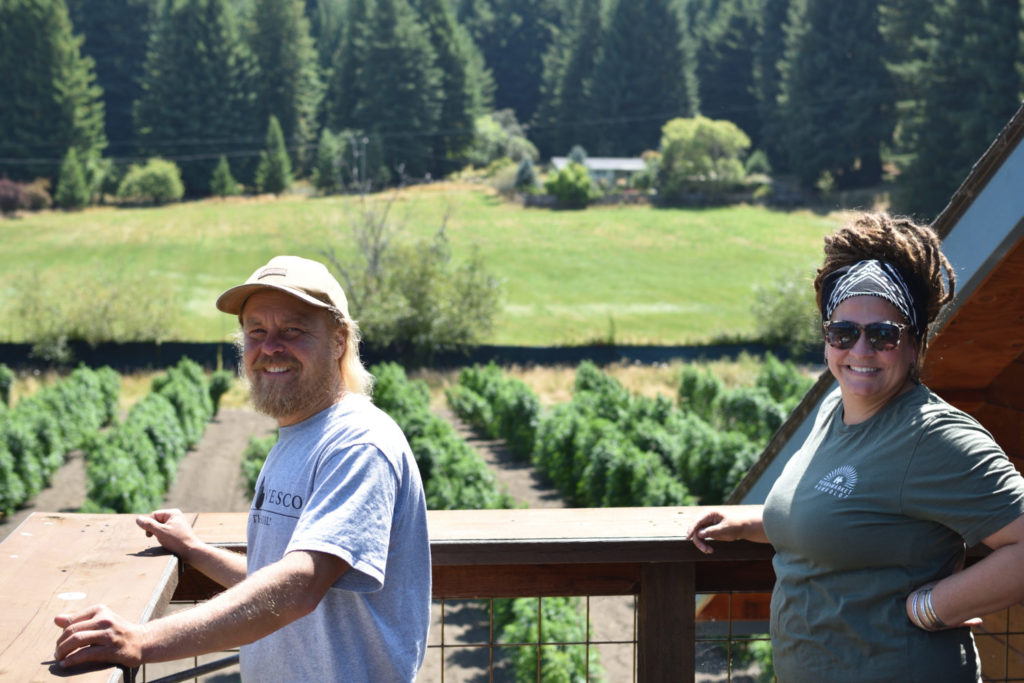
Advertising disclosure: We may receive compensation for some of the links in our stories. Thank you for supporting LA Weekly and our advertisers.

